Exploring the Deep Summer Color Palette: A Complete Guide

Key Takeaways
- Deep summer mixes cool with medium-to-deep value for a sophisticated, low-key appearance. Focus on muted, shaded colors instead of brights or pastels to maintain consistency between outfits and makeup.
- Undertone directs all you select. If silver jewelry suits you better than gold, opt for cool or **neutral-cool** tones in your clothing and foundation and lipstick.
- Value and chroma count for equilibrium. Medium to deep lightness, low to medium saturation, smoky or dusty – never neon or too warm.
- Start with a foundation of core neutrals for your wardrobe and then sprinkle in key colors and soft accents. Bring a color fan or swatch book shopping to help verify matches and steer clear of clashing hues.
- See if you have typical deep summer features like ash-brown to soft-black hair, cool beige to rosy-olive skin and greyed eye colors. Experiment with an online color tester and verify your season against swatches.
- Stay styling consistent – clothes, make-up and jewelry – for a polished look. Select silver-finished metals and accent stones such as amethyst or sapphire to highlight ensembles without overwhelming them.
🌸 Discover Your Seasonal Color Analysis
Ready to discover your seasonal color type? Take our comprehensive seasonal color analysis to identify whether you're a Deep Summer or another seasonal type. Get personalized color recommendations that enhance your natural beauty.
Take Seasonal Color Analysis →Deep summer is that hottest stretch of the season, when days spike over 30°C and nights are saturated with warm air and sedate breezes. Streets sparkle, fruit stands overflow with melons and figs and shade becomes valuable property.
Skin requires consistent SPF, hydration breaks are important, and breathable garments make a HUGE difference. Food keeps for less and plans move to early mornings or late nights.
So, easy does it, stay cool and enjoy it!
📚 Recent Articles
What is the deep summer profile?
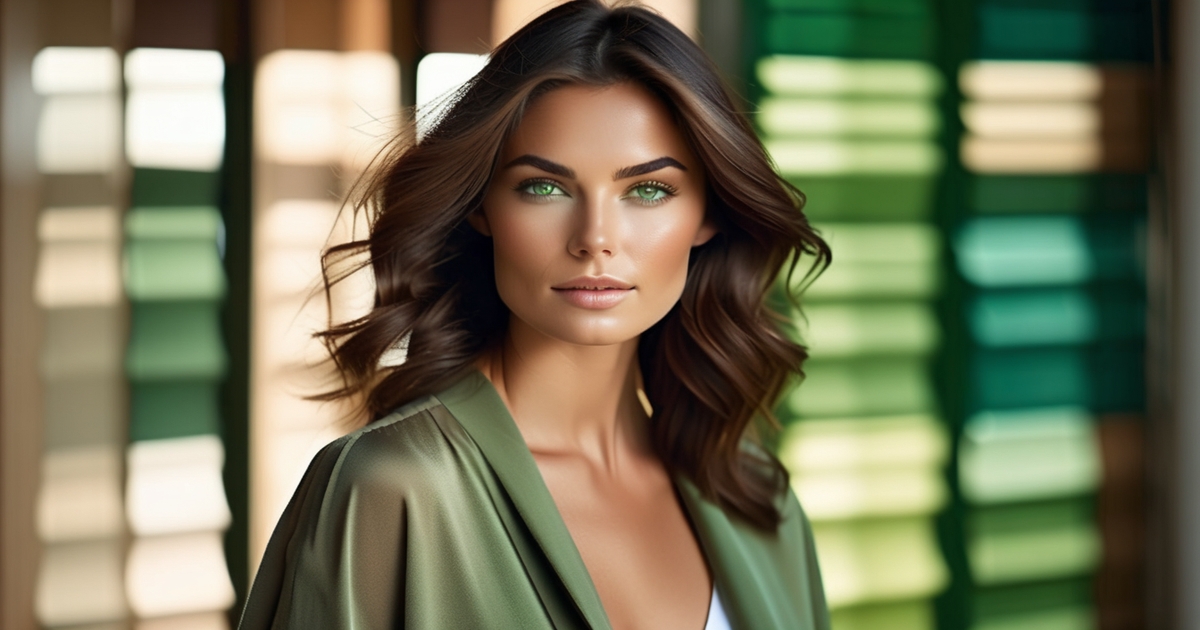
A sub-season of Summer, Deep Summer features typical **summer colors** with cool undertones, medium-to-deep coloring, and a hushed, dappled quality. This season falls between True Summer and Soft Autumn, blending coolness with muted, earthy depth. The **summer color palette** favors muted, tonal colors over brights or pastels, reflecting the natural hair, skin, and eye colors that are often cool, deep, and soft.
1. The essence
Think refined calm: cool meets depth to form an understated look that reads polished rather than loud. The face exhibits minimal contrast between hair, eyes and skin, so nothing yells—everything melds.
With many Deep Summers having strong coloring and deep brown or gray eyes, they are often misread as Winters. Brutal heat whips here. The best shades have that balanced shaded quality, like soft navy, dusty teal, muted burgundy, and smoky plum.
The lure is understated elegance, not aggressive boasting. Depth, rather than coolness or lightness, takes center stage and distinguishes this profile from other Summers.
2. The undertone
Cool undertones rule: skin may show blue, pink, or rose hints; hair usually ashy brown to dark ash; eyes cool brown, gray, or cool hazel. The bottom remains chilled, never bronzed, although the face may tan.
Quick test: silver jewelry tends to look fresher than yellow gold on this profile. Undertone drives the entire palette. Colors lean cool or neutral-cool, which keeps ensembles harmonized and prevents clashing.
Even when a color leans neutral, it mustn't lean warm.
3. The value
The palette spans medium to deep, avoiding both light pastels and pitch-black extremes. Colors have substance and heft, but not Winter-intensity punch.
A value chart helps: place soft navy, graphite, burgundy, forest teal, and raspberry around the mid-to-deep band. On this scale, what emerges is a steady, grounded closet that just works day after day with no effort.
4. The chroma
Chroma remains low to medium. Shades look dulled down, not neon, not chalky pastel. This maintains balance so tones merge with attributes instead of rest upon.
Aim for "dusty," "inky," or "smoky" versions: smoky plum, inky teal, dusty raspberry, soft navy. High-chroma brights can drown the face or cast red onto the skin.
That risk is greater for people with high contrast between skin and hair or eyes.
5. The influence
Soft Autumn neighbors impart a touch of earth, so some neutral-warms can work if they're similarly muted and cool-leaning. Common crossovers: deep teal, muted burgundy, smoky plum, and even charcoal olive with a cool cast.
Still, Deep Summer occupies Summer's coolest edge, close to Winter on the spectrum. It's also known as Dark Summer or Bright Summer, depending on how cool or warm it is.
Best bets continue to be deep, cool colors—burgundies, soft navy, raspberry and amethyst pinks—even if a few Autumn notes creep in. Borrow from neighbors as necessary, but ground ensembles in the main palette.
Distinguishing the seasonal flow
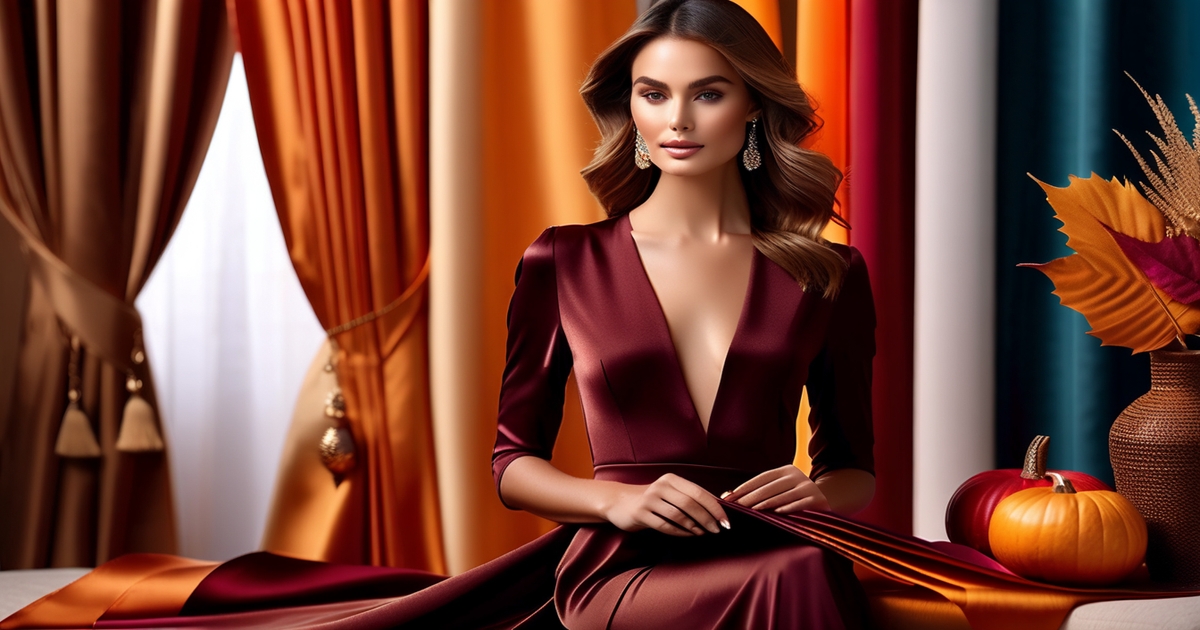
Deep summer occupies a middle ground inside the seasonal color analysis system, serving as the bridge between summer's cool restraint and autumn's deeper weight. It's on the cool side, but it has more depth and presence than other summer profiles. Consider the cool undertone, then medium-to-dark value, with soft-to-moderate chroma.
This combination is the reason deep summer colors plot closer to winter than summer or autumn on the continuous color chart. The summer color palette leans toward cool berries, blue-greens, deep teals, pine, and ink blues — black softens to charcoal, and stark white transitions to soft white or stone.
Undertone, value and chroma do the heavy lift. Undertone responds to the 'cool or warm' question, deep summer is cool. Value determines that light‑to‑dark span — deep summer slopes deeper.
Chroma dictates power, and deep summer remains hushed, not luminous. The depth of the look is what determines the type, with coolness and lightness being sub-traits. If a color appears sharp or glaring, it tilts toward winter; if it veers dusty or brownish, it leans autumn; if it goes pale and powdery, it slides toward true or light summer.
| Profile | Undertone | Value | Chroma | Hallmark colors | Common mix-ups |
|---|---|---|---|---|---|
| Deep Summer | Cool | Medium‑dark | Soft‑moderate | Deep teal, pine, berry, charcoal, soft white | Confused with Deep Winter or Soft Autumn |
| True Summer | Cool | Medium‑light | Soft | Cool blues, rose, soft navy, dove gray | Looks balanced, not very deep or very soft |
| Light Summer | Cool | Light | Soft‑light | Pale yellow, light aqua, sky blue, lavender | Can look Spring‑like due to lightness |
| Soft Summer | Cool‑neutral | Medium | Soft | Dusty mauve, sage, taupe | Often resemble Autumn: red hair notes, hazel/brown eyes, faint gold skin |
| Deep Winter | Cool | Dark | High | Black, icy jewel tones, optic white | Too high contrast for most summers |
To separate your season with less trial and error, utilize a seasonal color analysis guide or flow chart that tests undertone first, then value, and finally chroma. Observe how your skin responds to silver rather than gold, then explore mid-deep cool shades to see if they enhance your features or feel heavy.
Sub-types within a seasonal palette can help you determine which segment of the wheel best suits you when your characteristics border between two categories.
When constructing outfits, layer tonal colors and avoid too much contrast. Keep the number of different colors low, allowing near-values to stack: charcoal with deep teal, berry with muted plum, soft white with slate.
Although it's okay to dip a few shades from other palettes, you'll receive the greatest lift by remaining near the sweet spot of your own palette.
The shaded summer color palette
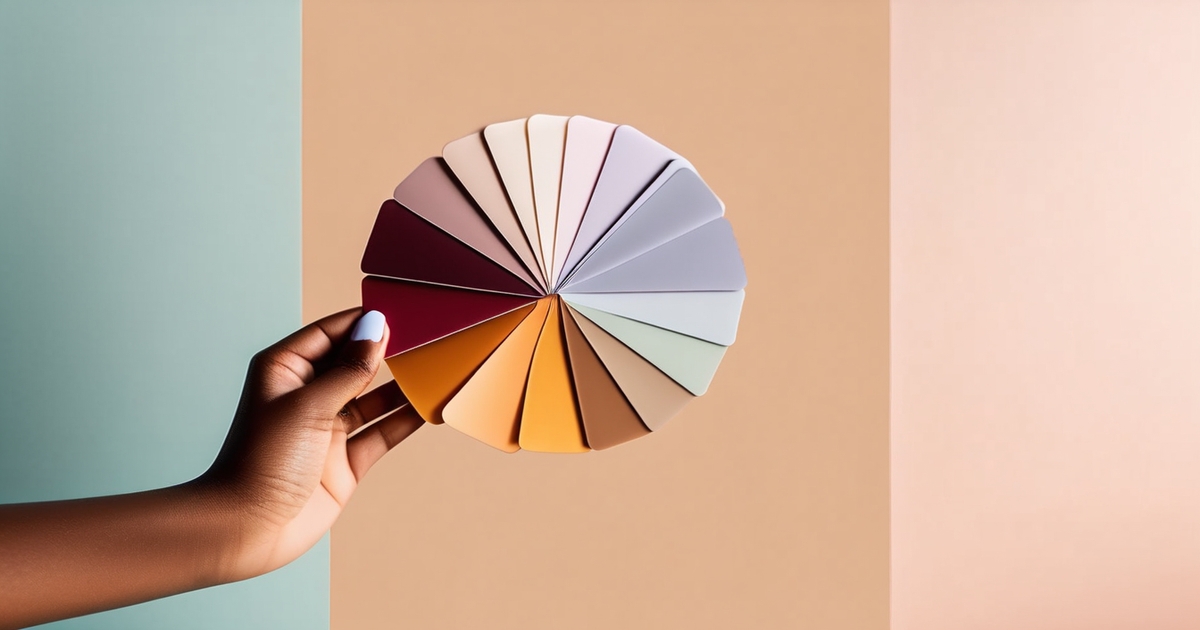
A cool, muted, deep shaded set of colors that feel like dusk belongs to the Summer season—also known as Sweet Pea Summer or Brown Summer—but skews a little darker and more earthy. This palette stretches from darkest charcoal and blue spruce to pale powder blues and soft pinks, showcasing typical summer colors. Vibrant spring orange and warm shades are not included, so take along a color fan or swatch book for accurate color matching.
Core neutrals
- Soft navy, charcoal grey, blue-black, pewter, cool taupe, stone, mushroom and smoked espresso.
These neutrals work best as main pieces—suits, coats, blazers, trousers and structured skirts—because they ground the look. Soft navy is the workhorse – charcoal and pewter add shine without shine. Cool taupe and stone bring a casual effortless ease to daywear.
Light neutrals—stone, taupe, and beige—sparkle when juxtaposed with darker colors, providing a crisp, tranquil highlight. Build a small capsule: navy coat, charcoal suit, taupe trousers, stone shirt, pewter knit, and a blue-black dress. Each mixes with key tones and accent hues from this palette, so you can blend without sharp boundaries.
The tone remains cool and muted, flattering deep summer skin and eye depth.
Key colors
- Soft navy
- Blue spruce
- Smokey teal
- Slate blue
- Dusty raspberry
- Amethyst pink
- Mulberry
- Cool burgundy
- Steel rose
- Powder blue
Use them in shirts, dresses, and statement layers to stay uniform. A slate-blue shirt beneath a pewter suit reads sharp yet soft. A dusty raspberry dress with a charcoal wrap warms the face without going bright.
The quality to keep every time: cool, muted, smokey. If a pink tastes sweet or a blue seems neon, it's not shaded summer. Understanding your summer sub-type unlocks additional possibilities, so try blue spruce versus soft navy, broad and cool but bring different moods.
For spur of the moment planning, have a pocket list or photo chart in your phone with fabric swatches. It accelerates decisions in stores in dappled light.
Accent shades
- Silver grey
- Graphite
- Soft plum
- Berry lip (cool)
- Dusty mauve
- Blue-grey
- Deep rose
- Cool cocoa
Accents in scarves, belts, bags, shoes and nail color, makeup, etc, add lift without the noise. A blue-grey silk scarf invigorates a navy coat. Soft plum eyeliner defines eyes more gently than black.
Mix accents with core neutrals for balance: cool cocoa bag with stone trousers; deep rose lip with charcoal blazer. Ditch the bright, warm or stark accents—no neon coral, no tomato red, no icy white—that battle with the palette's tranquil, twilight-like richness.
Tonal looks flatter, but a controlled contrast—light stone with blue-black, or powder blue with mulberry—often looks best, as well.
Are you a deep summer?
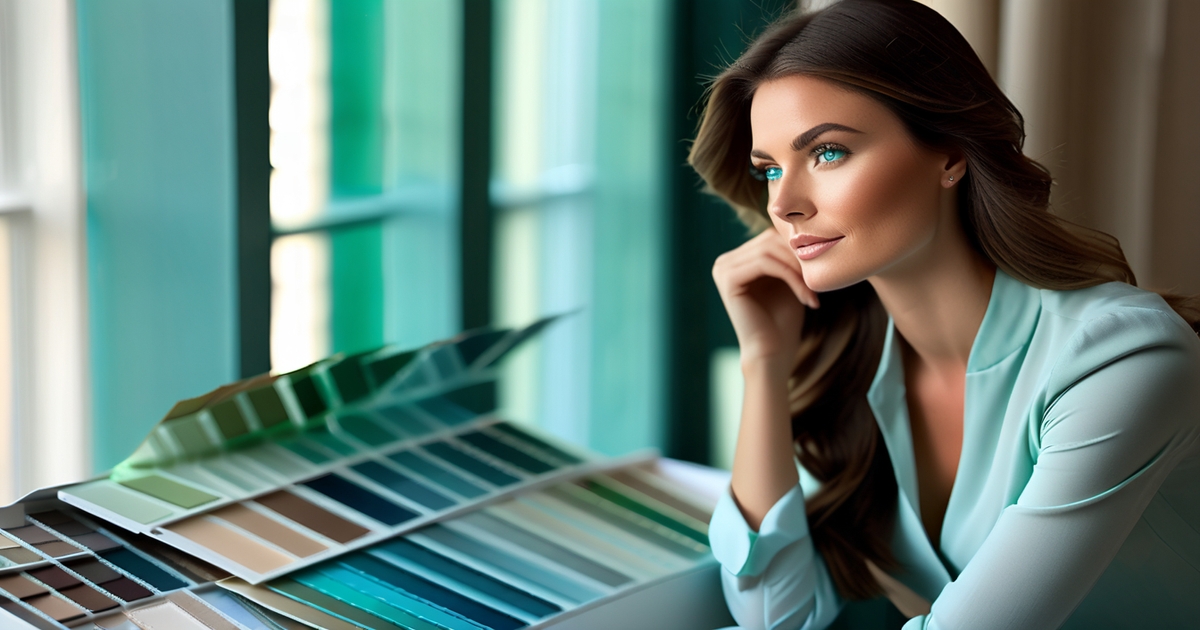
Deep summer is depth first of all. Coolness and softness are there, but depth leads. This profile can look close to Winter because the colors sit closer to Winter on the spectrum, not Summer or Autumn.
Consider bold pigmentation, frequently deep brown or cool grey eyes, and characteristics that favor deep, cool hues such as soft navy, burgundy, raspberry pink and amethyst pink. Try a color analysis kit or an online tool to drape-test, then compare your characteristics to confirmed deep summers!
Search for medium-to-dark ash brown hair, muted eyes, cool undertones and a low-gold palette. If contrasting outfits gives you confidence, you may rest here. Others refer to it as Dark Summer or Bright Summer, in tribute to its depth.
Skin tones
Usual deep summers skin ends up in cool beige, rosy beige or olive with a pink or blue cast. It feels neutral-cool in close, not warm peach or golden tan. In sunlight, the skin appears smooth and even when contrasted against cool, saturated, deep colors.
Tanning lines assist! Skin doesn't get golden very often, it burns or comes up a nice cool, muted tan that is not warm. Orange but not honey, make a note of it.
For base makeup, try foundations labeled "cool" or "neutral-cool." Swatch along the jaw in daylight. If it glows orange, it's off. A cool match that coolly diminishes redness and brightens away dullness without the weight of coverage.
Eye patterns
Typical eye shadows are grey, grey-blue, grey-green or a muted hazel with low warmth. Deep brown sometimes, too, generally cool or neutral rather than amber-rich.
The iris tends to have a painterly effect. Edges are less crisp — a haze or veil lowers contrast. Look for a smoky or clouded pattern—specks appear diffused, not brilliant.
This 'misty' eye sees more summer than winter, even when dark. Keep eye shadow cool and subdued. Harsh or warm tones–fiery copper, pumpkin, brassy gold–battle the natural hush and can make the eye look older.
Hair colors
Natural hair usually lies in medium/dark ash brown, soft black or muted dark blonde. Undertones are cool or neutral, with minimal gold or red.
Avoid dyes with heavy red, gold or copper claims. Those notes conflict with the palette and can emphasize skin redness. Hit a color picker on a clean hair shot and cross-reference to ash charts.
Go for cool espresso, charcoal brown or smoky dark blonde. Depth permits more outfit contrast than other Summers. That's why Deep Summers can masquerade as Winters, but they retain Summer's tranquil, cool gentleness.
How to apply your colors
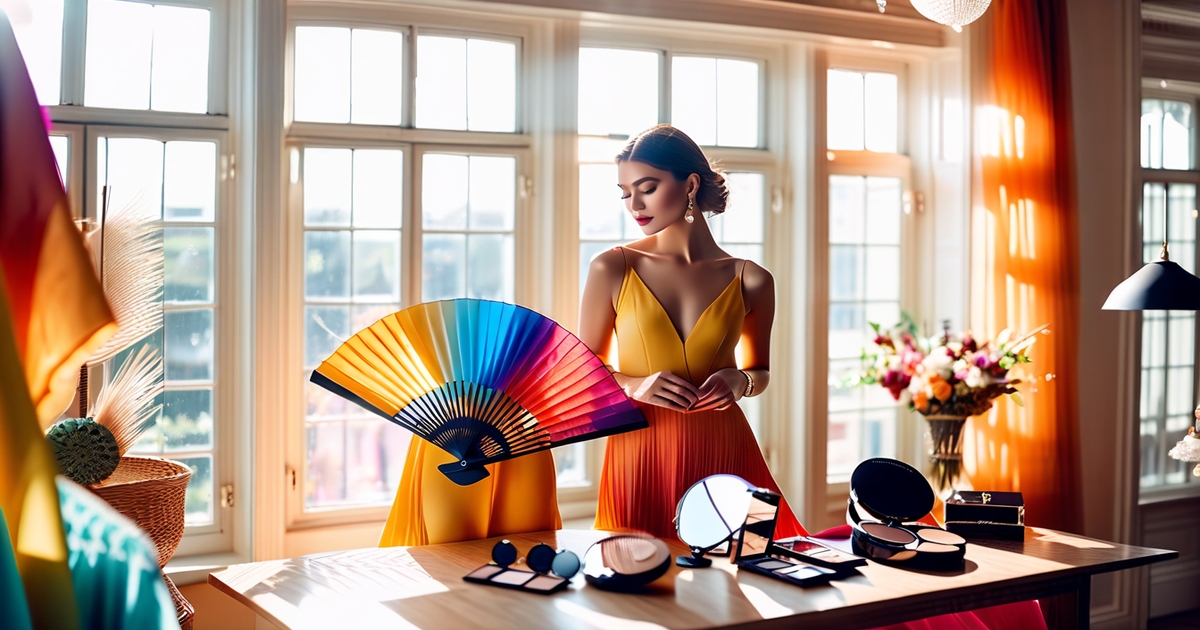
Begin with a personal palette or color fan and carry it in your bag. Deep Summer tends cool, muted, and medium-to-deep in value, so go for a soft, blended feel with clothes, makeup, and jewelry.
Begin with core neutrals, then sprinkle in some accent shades. Some hues energize many people while others deplete them and this palette guides you away from severe or hot colors that fight with you.
Wardrobe building
Build a simple checklist: coats and jackets in charcoal or deep navy; knit tops in cool taupe, soft gray and blue-gray; shirts in slate, muted teal and dusty berry; pants and skirts in ink navy and cool espresso; dresses in deep plum or smoky raspberry; shoes and bags of charcoal, pewter or cool brown.
Select quality not quantity. One deep navy blazer, two charcoal trousers and three knit tops can mix and match across a week with ease. Versatile pieces retain color and shape longer that keeps the balance.
A capsule list helps: 1 coat, 1 blazer, 2 trousers, 1 skirt, 3 knits, 2 shirts, 1 dress, 2 pairs of shoes, 1 bag, all within your palette. Put in amethyst, cedar green, or cool burgundy accent scarves.
No tomato red, camel or bright coral–skip everything that's out of this spectrum. A lot of people say they didn't know they could wear green, pink, yellow or red – and they can, when the tones are cool and smoky.
Brown is a mute champion here as well, if it be cool and subdued.
Makeup choices
Choose cool, muted shades: mauve or rose-plum blush; berry, currant, or cool wine lips; smoky eye in charcoal, slate, cool taupe, and soft navy. A hint of gray liner trumps black for day.
Match base products to cool or neutral undertones. Test in daylight along the jaw. If it glows orange, it's off. Most find makeup hardest—your deep summer chart really smooths this out.
Stay away from orange, peach or golden blush, bronzer and lipstick. Soft, cool, smoky, subtle colors tend to flatter this type.
Light Summer, which sits nearby, but runs paler—imagine sky blue, light aqua, lavender and pale yellow—drop those in occasionally if you tend lighter.
Jewelry metals
Choose silver, white gold or platinum. They reflect the palette's cool cast and maintain the crispness of the look.
Hang back on yellow gold and rose gold, they add warmth which combats the cool base. Stones in amethyst, sapphire, blue spinel and smoky quartz mirror your accents without screaming.
Let your jewelry frame, not steal the scene. Think skinny silver hoop, a pewter watch, or a deep sapphire pendant on a delicate chain.
Coordinated metals connect looks to cosmetics and provide a timeless, sophisticated edge.
The psychology of your palette
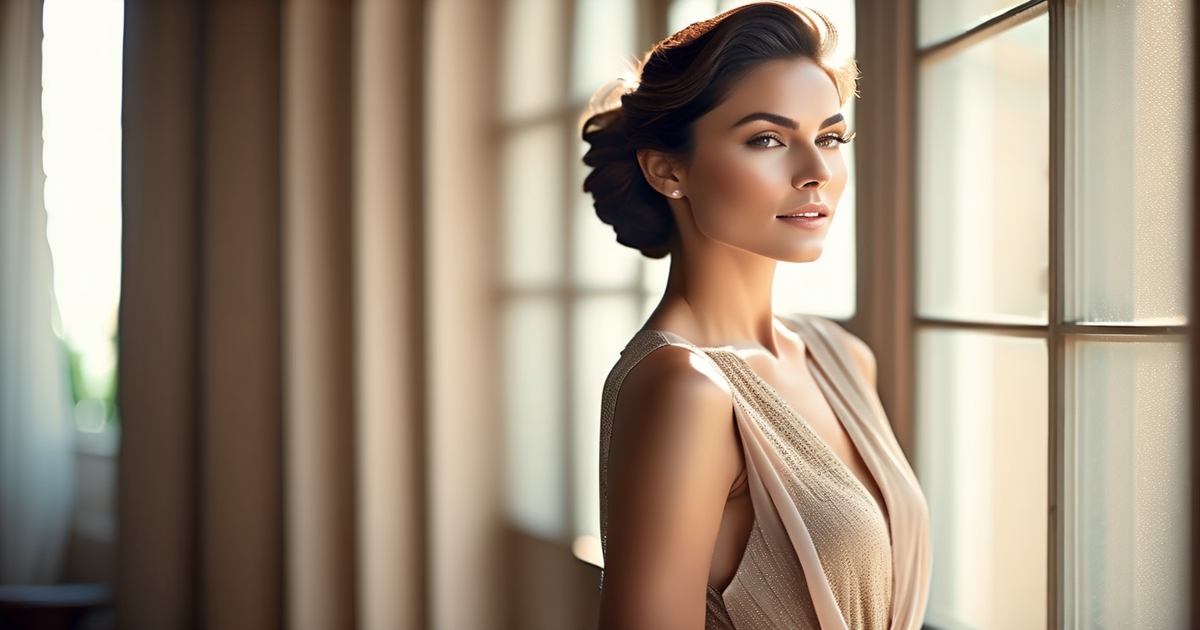
Deep summer, a part of the seasonal color analysis, skews cool, soft, and elegant. It embodies the essence of the summer season, showcasing colors like blue spruce, dusty plum, and deep teal. This classic summer color palette resonates with calmness and stability, making it a dominant trait for those with true summer colors.
Recognize that the deep summer palette conveys calm, sophistication, and understated confidence.
Muted cool colors tend to reduce visual "volume." A deep blue-green blazer or slate shirt has a still, grounded quality, unlike boisterous brights that force the eye to leap forward. In the board room, a charcoal-blue suit or mungo berry dress demonstrates concentration and will-power.
The psychology of your palette is complicated, and someday maybe an intricate equation will describe how the brain mixes hue, value and chroma into a feeling of loveliness. For now, patterns hold: soft-cool depth hints at maturity and care, the way frosted glass softens light yet stays clear.
Understand that wearing harmonious colors can boost self-esteem and create a polished impression.
When you're clothes mirror your skin's undertone and your hair's depth, your face appears more radiant, your eyes more luminous, and your wrinkles less harsh. Humans read that as 'well-rested' and 'capable,' and you sense it as well. Many learn this by trial: some look great in bright summer tones like fuchsia or cyan, while others seem washed out or overpowered.
If online tests had you on the fence, you're not alone. The 16-season system, a modernizing of the traditional 12, introduces subtlety such as "Deep Summer" compared to "Soft Summer Deep," which accounts for why one teal succeeds and another is unsuccessful. Try side-by-side tests near a window: deep teal vs. Bright cyan; smoke rose vs. Hot pink; slate vs. Jet black.
Use the palette to express individuality through subtle, elegant color choices rather than bold statements.
Style doesn't have to scream. A deep plum tie with a subdued steel shirt, olive-gray chinos with a blue-gray knit, or silver jewelry with a berry lip says 'thoughtful.' Small shifts carry weight: gunmetal over gold, cool taupe over warm beige, blue-based red over orange-red.
Hair contributes; cooler ash shades can harmonize with deep summer — warm caramel might battle it. If you adore black, hold it close to the skin in something textured–matte knit, soft wool–and add a nifty scarf to cool it out. If black dominates, try inky navy or graphite.
Leverage the psychological effects of cool, muted colors to project approachability and reliability in personal and professional settings.
Soft-cool colors reduce defenses. Deep teal or slate for client work demonstrates steadiness. Mist blue at cocktail parties seems expansive but not ostentatious. Results differ, and your interpretation may diverge from an authority's.
Okay. This is all a subjective process. Test, note feedback, and build a core set: navy-ink, blue spruce, dusty rose, soft white, pewter, and deep mulberry. Then sprinkle in accents like subdued jade or berry. Keep prints low-contrast and cool-based. Eventually you'll observe which hues brighten your face and which subdue it.
Conclusion
To bring it all home, Deep Summer rests in a tranquil, lush territory. Nice ground. Dim light High depth. Colors dwell in shadow, such as ink blue, wine red, cedar green, plum and steel gray. Clear skin. Eyes bright. Hair has shine, not gloss. The palette seems calm and clean.
To seal it, select one anchor shade, then one soft cool tint. Pair navy with dusty rose. Try FOREST with slate. Pair burgundy with charcoal. Keep metals cool. Silver takes the majority of days. Gunmetal is good too.
To try on, just take a quick pic by a window. Switch shirts. Monitor skin and eyes. If the face appears serene, you rocked it.
Need more assistance? Leave a comment, PR your swatch set and fit check.
Frequently Asked Questions
What is a Deep Summer color profile?
Deep Summer is a cool, muted, and deep seasonal palette that represents typical summer colors. It combines the lightness of summer season types with the richness of winter colors, featuring tonal colors that look fantastic on cool skin, deep hair, and medium-to-deep eyes.
How do I know if I'm Deep Summer?
Check your undertone first: cool, not warm. As a Deep Summer, your best colors fall within the summer color seasons, featuring cool, muted, and slightly deep shades. Silver jewelry complements your look, while balanced hues like charcoal, raspberry, and slate enhance your natural beauty.
What is the difference between Deep Summer and Deep Winter?
Both are chilled and deep, yet they belong to different seasonal color analysis categories. Deep Winter features higher contrast and more clarity, while Deep Summer encompasses softer, true summer colors. If harsh black and clear white feel overwhelming, you likely lean towards the soft summer palette.
What colors are in the Deep Summer palette?
In the summer season, opt for cool, shaded hues with depth such as navy, teal, and plum, while incorporating true summer colors like soft navy and cool gray as neutrals. Avoid warm oranges and vibrant yellows.
How should I build a Deep Summer wardrobe?
Begin with a light summer color palette featuring cool, deep neutrals such as charcoal, navy, and pewter. Incorporate accent colors like raspberry and teal to enhance the outfit. Choose soft textures and subtle prints, finishing with silver accessories for a classic summer look.
What makeup works best for Deep Summer?
Select cool, muted tones that align with your seasonal color analysis. Base with cool undertones using taupe, slate, and true summer colors like cool plum eyeshadows. Charcoal or navy eyeliner complements blush in cool rose or berry, creating a tonal look that avoids hot orange or neon lights.
How can I apply my colors for maximum impact?
Employ deep neutrals in proximity to the face, complemented by a typical summer color like raspberry or teal as a hip accent. Maintain a moderate contrast level while toning in layers within the summer color palette for cohesion. For work, pick navy and slate; for night, opt for berry lips and gunmetal jewelry.